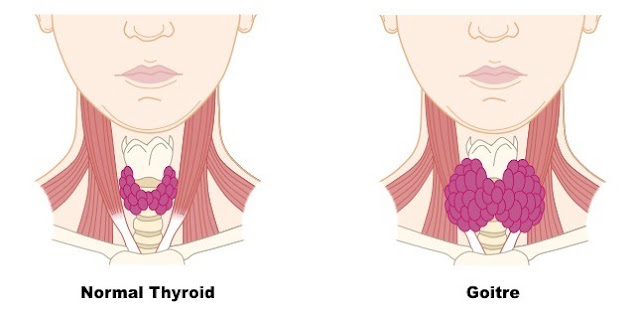Iodine is one of the rarest elements in the soil. Its concentrations in seawater and algae are significantly higher.
Iodine minerals are rare. Iodine in concentrations of 0.02-1.00% is present in the minerals lautarite and dieting. In the 19th century, the main source of iodine was calcite, which replaced seaweed as the main source. At the end of the 20th century, the new main source was saltwater springs.
The main producers of iodine today are Japan and Chile. Of the 84 elements found in nature, iodine is the 60th most common.
Iodine is oxidized to give elemental iodine with chlorine. The resulting solution is very dilute and therefore requires additional operations.
The two largest sources of iodine are east of Tokyo (Japan) and Oklahoma (USA). The salt waters of the springs have a temperature of 60 ° C. They are purified and acidified with sulfuric acid.
Iodine was discovered in 1811 by the French chemist Bernard Courtois. During the Napoleonic Wars in France, large amounts of potassium nitrate were needed, for the production of which sodium carbonate was needed. It can be isolated from seaweed collected from the coast.
Iodine is the heaviest of the stable halogens, which are the most active non-metals. They also include fluorine, chlorine, bromine, astatine and tenesin. They have the properties to combine with most chemical elements and form halides. All halogens are readily soluble in water and their solutions are strong acids. They occur in nature in the form of compounds.
The vapors condensed on cold surfaces and formed crystals in dark tones. The French chemist suggested that the substance that had evaporated with this violet vapor was unknown until now, but the lack of money prevented him from identifying it. He gave part of the sample to his colleagues to continue the research.
To separate the sodium carbonate, the algae is burned and the ash is washed with water. The French chemist added more sulfuric acid to purify waste products. As a result, a cloud of purple vapor rose.
In 1813, Louis Gay-Lussac reported that the substance was a new element and proposed the name iodine (from the Greek – violet) because of the color of its vapor.
Iodine, like other halogens, is one electron less than the stable configuration and is a strong oxidant. It reacts with many elements to fill its electron layer.
Elemental iodine forms diatomic molecules. It is highly toxic if taken diluted. Doses of 2 -2.5 grams for a person weighing 70-80 kg can cause death. Excessive iodine intake can have negative health effects in the absence of selenium. Applied topically to the skin, elemental iodine causes irritation and burns. Solutions with a high concentration of elemental iodine can cause tissue damage if used too often.
There are 37 known isotopes of iodine, of which the only one occurs in nature – Iodine-127. Others are radioactive and have a short half-life. They are usually the result of a controlled chemical reaction. Some iodine radioisotopes have a half-life of several hours or days.
For example, Iodine-123 has a half-life of 13 hours and is used in computed tomography and X-ray tomography. Iodine-125 has a half-life of 59 days and is used for radiation therapy for prostate cancer and brain tumors. Iodine-131 has a half-life of 8 days. It is used for radiation therapy to destroy the thyroid gland in advanced cancer. Newborns, children under 12, pregnant women, and nursing mothers are most at risk. Iodine prophylaxis is most effective when performed within 1-2 hours after a nuclear bomb or radiation. Conducted after the 5th hour, the effectiveness of prophylaxis is 10 times lower. We have already written that in several European countries there was contamination with Iodine-131 from an unknown source.
This gives rise to more research in other European countries: Finland, Poland, the Czech Republic, Germany, Spain, and France.
Due to its proximity to Chernobyl, monitoring is very common in Norway. Thus, in the second week of January 2017, traces of iodine were found in the air in the northern part of the Scandinavian country.
After the accidents at the Chernobyl and Fukushima nuclear power plants, many radionuclides, and heavy metals were released in addition to this isotope. Iodine accumulates in humans through the intake of contaminated food, and in the absence of sufficient iodine in the human body, this isotope accumulates in the thyroid gland and impairs its functions. May cause underlying disease,
A publication from 22 February 2017 Radiation surveillance detects iodine leak in Europe looks for the source of circulating radioactive iodine in Europe. The readings are different, it is difficult to calculate who the source is. Since only radioactive iodine was found, but not other isotopes, the source was most likely not a leak from a nuclear power plant, but from a manufacturer of iodine for medical or pharmaceutical purposes.



No comments:
Post a Comment